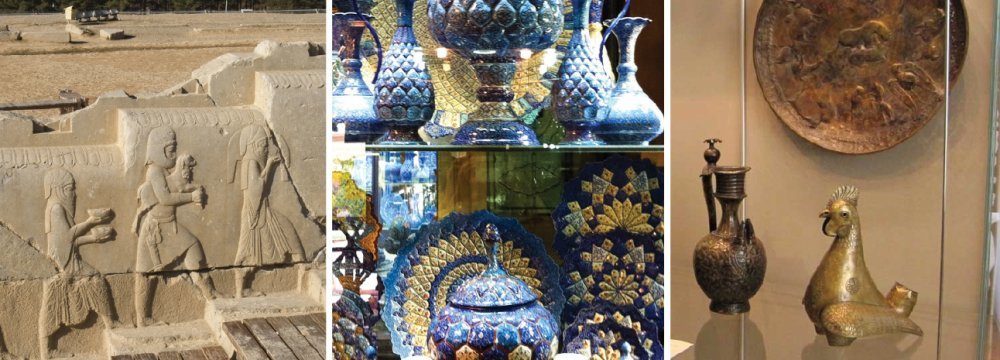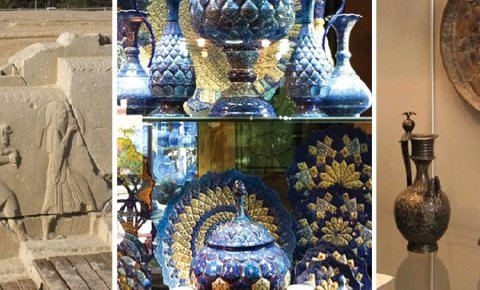The report includes data on measures and achievements in the fields of cultural heritage, handicrafts and tourism.
Cultural Heritage
The report published on the government’s official website indicates that in the cultural heritage sector, inscription and restoration were accorded high priority.
Based on the data, a total of 262 heritage items, including movable, immovable, intangible and natural heritage as well as those connected to the Islamic Revolution and the Sacred Defense (the 1980-88 Iraq-imposed war), were registered on the national heritage list, which are expected to receive better protection. Besides, restoration workshops became operational in nearly 300 historical houses, mosques, buildings, shrines and tombs as well as urban and rural textures. Almost 5,000 ancient objects were repaired.
Other measures in the sector include refurbishment and standardization of museums and documentation of heritage property.
Handicrafts
During the 100 days, handicraft exports reached over $59,000. More than $2 million in bank loans were allocated to qualified handicraft workshops and 11,000 new jobs were generated. Over 6,000 artisans received permits for setting up workshops during the period and 700 extinct or dying traditional crafts were revived through documentation and establishment of facilities for their production.

Tourism
In this key sector, most of the measures were directed at addressing inter-organizational problems and reforming the rules and regulations.
A majority of items in the report describe efforts to standardize the operations of travel agencies and facilitate their business.
Efforts were also made to address the shortage of lodging capacity that is considered the chief obstacle to Iran's tourism.
During the period, 26 lodging places were constructed to increase the accommodation capacity by 5,200 beds, in addition to 160 ecolodges. The average occupancy rate of rooms and beds stood at 12% and 58% respectively.
Moreover, investors in the sector received 200 billion rials ($5 million) in bank facility.
Empowerment of workforce active in tourism, plans for promoting halal tourism, educational programs, standardization of hotels and development of rural tourism in some 65 villages were among other steps initiated by the government.
What was missing, however, were practical measures in the fields of marketing and advertisement, which many experts believe will increase foreign tourist arrivals to a considerable degree, if implemented effectively. To achieve its declared goals of "inclusive, job-generating and anti-poverty economic development", President Hassan Rouhani's administration is relying heavily on these sectors.
Officials have repeatedly declared that the sectors under Iran's Cultural Heritage, Handicrafts and Tourism Organization have the best potentials to boost Iran's non-oil economy.


Your Comment